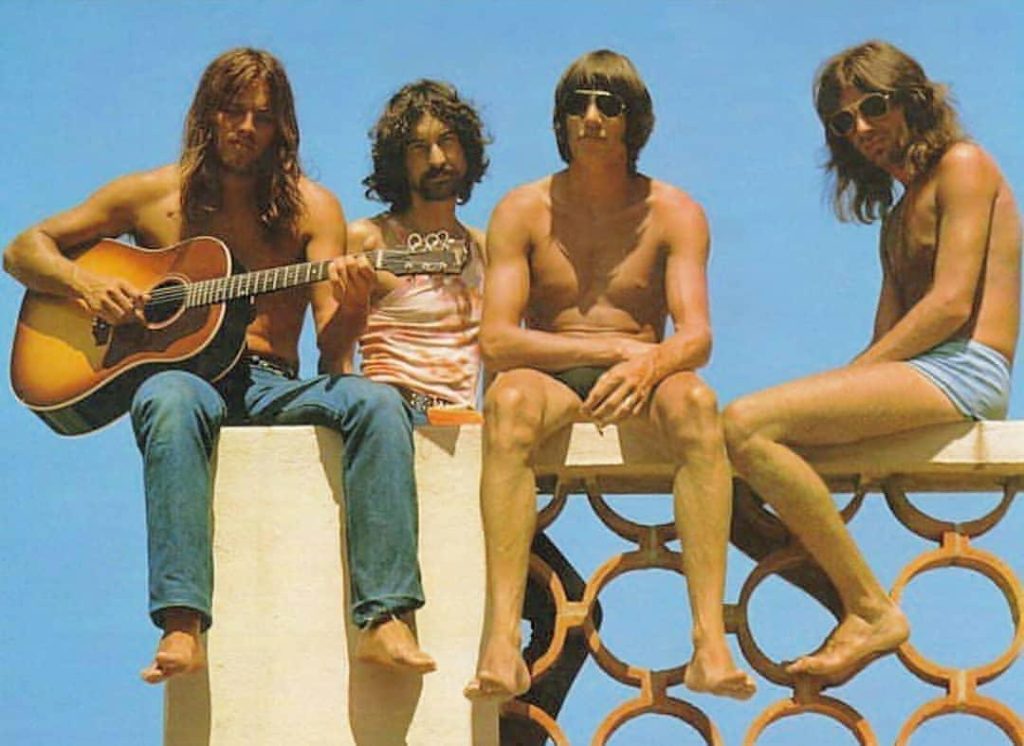The Development Of Large Rock Sound Systems Volume 3 by Chris Hewitt.

Timed with precision to coincide with the release of Pink Floyd ‘The Dark Side of the Moon 50th Anniversary’ is an extensive new publication by Chris Hewitt titled The Development of Large Rock Systems, Volume 3.
Chris Hewitt is a longtime Pink Floyd fan and vintage audio collector whose personal collection features a recreation of the entire Pink Floyd Live at Pompeii, Wem Watkins, PA backline. The attention to detail is simply outstanding, and the care and passion that he has shown in writing this publication shine through from the onset.
On the cover is the title of the book, which is The Development of Large Rock Sound Systems, and this could not be more clearly worded: The publication is exactly that: an extensive, personally annotated walkthrough of some of the monumental sound systems created, but also very carefully detailing the history and where the ideas for the creations came from.
Printed on thick, satin-smooth paper, the front cover highlights the David Bowie Ziggy Stardust tour and Ground Control, Pink Floyd’s Dark Side of the Moon 1973 Sound System, and live PA development from 1974–1977, and a section of the book is dedicated to the Australian Pink Floyd and details the use of their Rawson Starfinder Guitar cabinets, which are a faithful recreation of the icon WEM 4×12 cabinets that David Gilmour still uses live to this day. Chris and his team even went so far as to actually recreate the original speakers, down to the magnets.
Simply by opening the book, you can instantly get a sense of the care and quality that was put into it. One can assume Chris had thought about it obsessively from the way his annotations complement the photographic content.
Chapter 1 starts off with a brief history of the founding of Marshall Equipment Hire in 1971 and details the history spanning from Abbey Road Roadies Phil Hearn and Joe Browne and their involvement in talking Jim Marshall into building a PA system for the 1971 Weeley Festival.
Elsewhere in the chapter, there is a detailed history of how Meh (Marshall Equipment Hire) evolved into The American Sound Company.
Theres a nice contribution from Nick Gibley, who was one of the original partners in Lyton Sounds and Heavy Lights and was part of the team that was commissioned with supplying the stage, lighting, and PA for the 1971 Wheeley Festival.
Chapter 2 contains segments about the advancement of concert audio systems and the fact that the equipment has become so complex and valuable that a crew had to be entrusted with taking charge of looking after it. This chapter focuses heavily on Thin Lizzy’s road crew, Charlie McPherson and Pete Eustance, and talks about some of the issues they faced on the technical side of things.
By this point in the publication, it’s clear that this book is a timeline of historic events and shows great care and personal reflection on the golden era of rock and roll, which is heavily focused around the 1970s.
With 19 extensive chapters that segue through a staggering 312 pages, there is so much information that it would be virtually impossible for us to review without spoiling the content for the books readers.
There is so much history within the advancement of sound systems that this book is just a complete encyclopedia of just how much the technology advanced, how various equipment manufacturers from that period were founded, and how extensively large PA systems that hadn’t existed before were commissioned. All of this information is staggering in that, in a sense, it was all the original foundation for the audio systems that we now have become accustomed to with attending modern-day concerts and festivals.
For visitors of A Fleeting Glimpse, the section of the book that is simply STAGGERING and is actually one of the only publications of its kind that details the time period of the departure of the original Pink Floyd Tour Manager and later Sound Engineer Peter Watts is a must-read.
In the chapter entitled Pink Floyd’s Sound Systems: From The Dark Side Of The Moon Onwards, 1973–1977, it starts by telling the story of who took over after the mysterious departure of Peter Watts in 1974. Peter was still working on the French tour in the summer of 1974 but had left before the winter tour. Technicians on that 74 have been quoted as saying “the atmosphere on the tour was quite frightening”.
Mick Kluzynski took over shared duties over the running of Pink Floyd’s PA System in 1974 and shares his praise for Peter’s input into shaping the band’s live sound characteristics and the ideas that he came up with, including the establishment of the Pink Floyd quadraphonic sound system.
The chapter continues on through 1975, with Pink Floyd crew Mick and his colleague Robbie Williams detailing the assembly, repair, and modification of the band’s PA system, and then moves on to how Pink Floyd always relied on their on-stage amps to hear themselves before going onto describe the introduction of stage monitors, which were actually only originally brought in to help Dick Parry hear the rest of the band due to his saxophone being so loud.
An interesting revelation from this chapter was the reason David Gilmour actually started using floor monitors.
Elsewhere in this segment of the publication, Chris goes on to tell the story of what preamps the band started to introduce to their system and how much Peter Watts got into the advancement of technology and really into the physical technicality of the audio dynamics.
Continuing on, there is a brief section talking about Britannia Row Studios and how, when the band was not touring, to keep their loyalty to the road crew, they actually hired their own equipment out to outside parties.
Without giving too much away This chapter alone is worth the price of the book. It is simply understated in modern society how much Pink Floyd actually became the pioneers of concert sound systems and how important Peter Watts input in this was. This section of Chris’s book feels almost like a celebration of Peter Watts work with Pink Floyd, and one cannot quite put into words how informative and beautifully constructed this was.
Unlike the previous publication of this series, which is titled The Development of Large Rock Sound Systems, Volume 2, which we reviewed previously on the site, this edition feels almost like the pinnacle of Chris’s writing. The way the book has been constructed and the way the photo presentation has been intricately thought out to fit in perfectly with the content are commendable.
We highly recommend picking this one up. For the audiophiles among the community, this one is a must-have.
The book is available for purchase worldwide for the small price of £39 by heading to Deeply Vale.
You can do so by Clicking Here.




